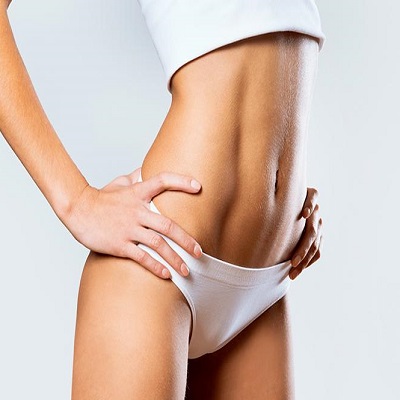In a world where aesthetics and self-confidence are deeply intertwined, body contouring procedures are becoming increasingly popular. Among them, Liposuction in Islamabad remains one of the most well-known and widely performed surgical methods for removing stubborn fat. However, with technological advancements, a range of non-surgical fat reduction procedures has emerged, offering alternatives for those seeking less invasive solutions.
This blog will provide a comprehensive comparison between liposuction and other fat removal treatments available in Islamabad. Whether you're considering a surgical route or exploring non-invasive methods, understanding the differences, benefits, and limitations of each option is essential to making an informed decision.
Understanding Liposuction
Liposuction is a surgical fat removal technique designed to target and permanently remove fat deposits from specific areas of the body. It’s especially effective for patients struggling with localized fat that does not respond to diet and exercise. Common areas treated include:
- Abdomen
- Flanks (love handles)
- Thighs
- Arms
- Chin and neck
- Back
The procedure involves inserting a cannula (a thin, hollow tube) through small incisions to break up and suction out fat. It’s typically done under general or local anesthesia, depending on the area being treated and the amount of fat removed.
Key Benefits of Liposuction:
- Immediate and dramatic results
- Permanent fat cell removal
- Precise body sculpting
- Effective for larger fat volumes
However, it also involves downtime, bruising, and recovery that may last several days to weeks.
Non-Surgical Fat Removal Alternatives
Over the years, non-invasive and minimally invasive fat removal procedures have become more accessible in Islamabad. These options are ideal for people who are not ready for surgery or only require mild fat reduction.
Let’s explore some of the most popular alternatives to liposuction:
1. CoolSculpting (Cryolipolysis)
CoolSculpting is one of the most recognized non-invasive fat reduction treatments. It uses controlled cooling to freeze and destroy fat cells, which are naturally eliminated by the body over time.
Pros:
- Non-surgical
- Minimal downtime
- Suitable for small, localized fat bulges
Cons:
- Results take 1–3 months to appear
- Less effective for larger fat deposits
- May require multiple sessions
2. Laser Lipolysis (e.g., SmartLipo)
This technique uses laser energy to liquefy fat before it is either removed through suction or naturally flushed out by the body. It can also promote skin tightening through collagen stimulation.
Pros:
- Less invasive than traditional liposuction
- Shorter recovery period
- Skin tightening benefits
Cons:
- Suitable only for small to moderate fat deposits
- Not ideal for patients looking for major contouring
3. Ultrasound Fat Reduction (e.g., UltraShape)
Ultrasound-based fat reduction uses sound waves to target and destroy fat cells without affecting surrounding tissues. It's commonly used on the abdomen and flanks.
Pros:
- Completely non-invasive
- No anesthesia or downtime
- Gradual and natural-looking results
Cons:
- Results may vary
- Requires multiple sessions
- Less dramatic outcomes than liposuction
4. Radiofrequency (RF) Fat Reduction
RF technology heats the fat layers beneath the skin, destroying fat cells while also tightening the skin. This method is often combined with other treatments for enhanced results.
Pros:
- Painless and non-surgical
- Helps improve skin tone
- Suitable for mild body contouring
Cons:
- Subtle results
- Often requires several sessions
- Best for small areas
Comparing Liposuction with Non-Surgical Procedures
FeatureLiposuctionCoolSculptingLaser LipolysisUltrasound Fat ReductionRF Fat ReductionInvasivenessSurgicalNon-invasiveMinimally invasiveNon-invasiveNon-invasiveAnesthesiaYesNoLocalNoNoDowntime1–2 weeksMinimalA few daysNoneNoneResults OnsetImmediate to 3 months1–3 monthsWeeks to monthsGradualGradualEffectivenessHighModerateModerateMild to moderateMildSessions NeededOneMultipleUsually oneMultipleMultipleFat VolumeLarge to moderateSmallSmall to moderateSmallSmall
Which Option is Right for You?
Choosing between liposuction and other fat removal procedures depends on several factors, including:
- Amount of fat to be removed: Liposuction is best for moderate to large volumes.
- Treatment goals: If you're seeking precise sculpting, liposuction offers more control.
- Tolerance for downtime: Non-surgical options are better for those who want to avoid recovery time.
- Budget and time: Liposuction is a one-time investment, while non-invasive treatments may require multiple sessions.
- Skin elasticity: Surgical techniques may be better suited for patients with loose skin that needs tightening.
It's always best to consult with a certified cosmetic surgeon who can assess your goals, body type, and preferences to recommend the most appropriate procedure.
The Importance of Choosing a Trusted Clinic
Regardless of the procedure you opt for, selecting a qualified and experienced provider is essential. Surgical treatments require expert handling to avoid complications and ensure optimal outcomes. Non-surgical treatments should also be performed by trained professionals to guarantee both safety and effectiveness.
Look for clinics with a strong track record, advanced technology, and a patient-centric approach. Reviews, before-and-after photos, and doctor credentials can all help in making an informed choice.
Final Thoughts
Both liposuction and non-surgical fat removal procedures have their place in modern aesthetic medicine. While liposuction provides immediate, dramatic, and permanent results, non-invasive options offer a gentler approach with minimal downtime. For those in search of fat removal solutions in Islamabad, understanding the pros and cons of each method is key to finding the right fit for your body and lifestyle.
If you're considering fat reduction, whether through surgery or a non-invasive method, SKN Cosmetics clinic offers expert consultation and world-class care. Their experienced team provides tailored recommendations based on individual needs, ensuring safe, effective, and natural-looking results for every patient.





Comments